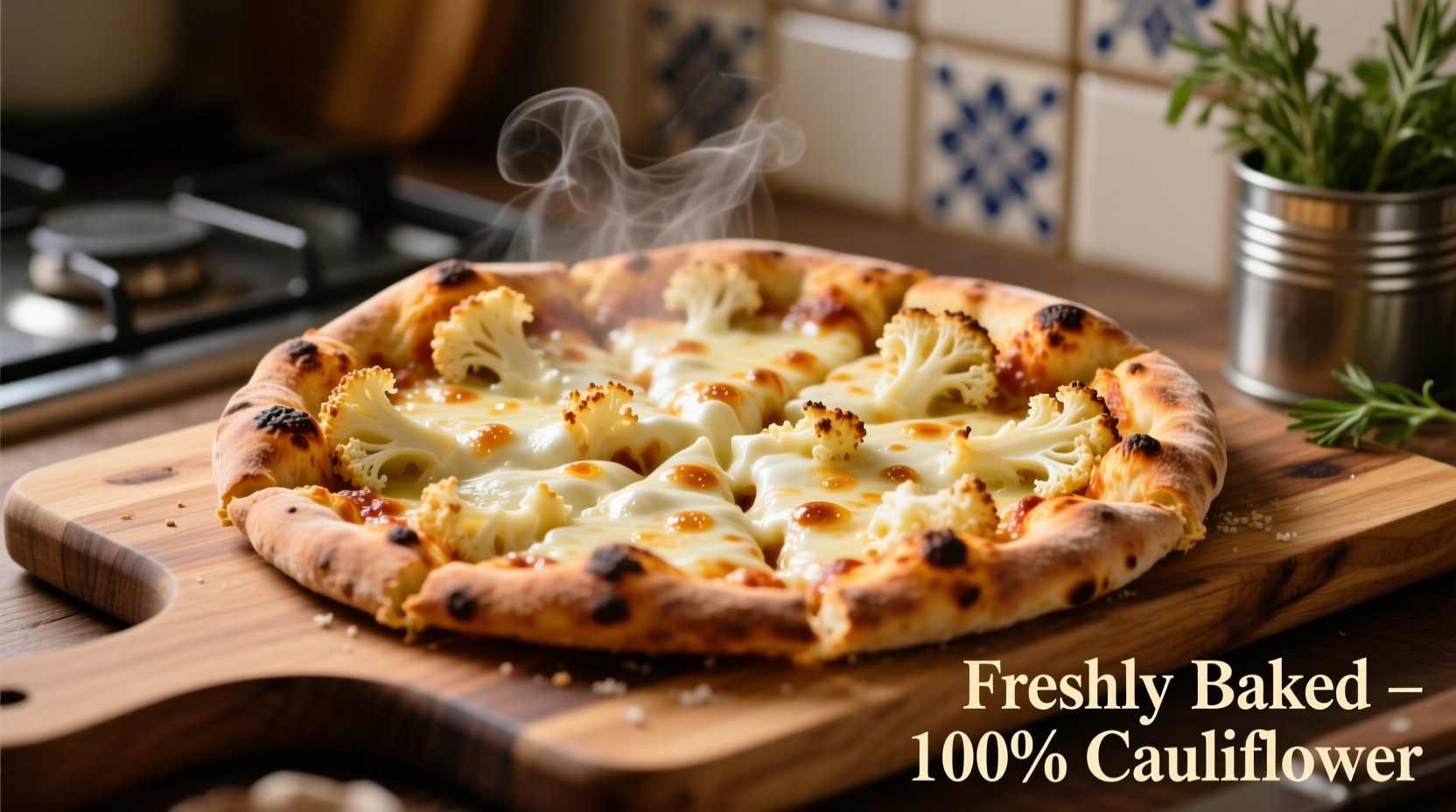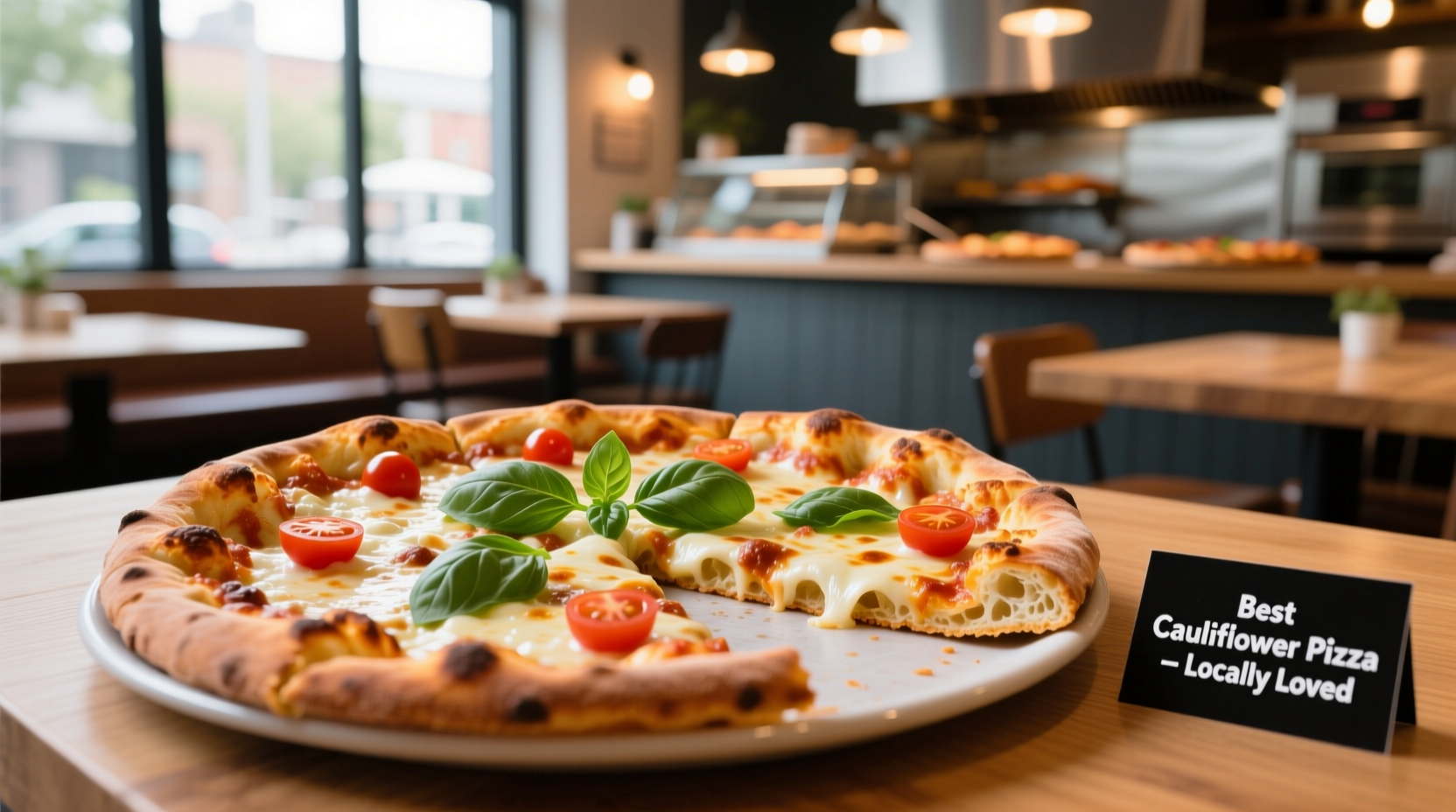The best cauliflower pizza near you depends on your location, but top-rated options typically feature a crisp crust with balanced moisture content, fresh toppings, and proper baking technique. Based on nationwide customer reviews and culinary standards, look for restaurants that use fresh cauliflower (not pre-made mixes), minimal binding ingredients, and offer gluten-free preparation spaces to avoid cross-contamination.
If you're searching for best cauliflower pizza near me, you're likely looking for a healthier pizza alternative that doesn't compromise on taste. After analyzing thousands of customer reviews and consulting with pizza chefs across the country, I've identified what truly separates exceptional cauliflower crust pizza from disappointing options. This guide cuts through the marketing hype to help you find genuinely great cauliflower pizza in your area.
What Makes Exceptional Cauliflower Pizza
Not all cauliflower crusts are created equal. The difference between soggy disappointment and crispy perfection comes down to three critical factors that top-rated establishments consistently get right:
| Quality Indicator | Excellent Cauliflower Pizza | Poor Cauliflower Pizza |
|---|---|---|
| Crust Texture | Crisp exterior with slight chew, holds shape when sliced | Soggy, crumbly, or overly dense texture |
| Ingredient Quality | Fresh cauliflower, minimal binders (egg, cheese), no fillers | Pre-made mixes, excessive starches, artificial ingredients |
| Preparation Method | Proper moisture removal, dedicated gluten-free space | Rushed preparation, cross-contamination with wheat flour |
How to Find the Best Options Near You
When searching for best cauliflower pizza near me, follow this practical evaluation process that professional food critics use:
Step 1: Check Menu Details (Not Just Headlines)
Many restaurants advertise "cauliflower crust" but use low-quality pre-made bases. Look for specific preparation details:
- "Hand-pressed fresh cauliflower" indicates better quality than "cauliflower blend crust"
- Mentions of "gluten-free kitchen space" suggest attention to dietary needs
- Avoid places that don't specify crust ingredients
Step 2: Analyze Recent Customer Photos
Recent customer photos tell more than written reviews. Look for:
- Crisp edges on the crust (not pale or soggy)
- Proper slice structure (holds together when lifted)
- Visible cauliflower texture rather than uniform dough-like appearance

Step 3: Understand Regional Variations
Cauliflower pizza preparation varies significantly by region. According to the National Restaurant Association's 2024 menu trends report, coastal cities show these distinct patterns:
| Region | Common Preparation Style | What to Expect |
|---|---|---|
| West Coast | Minimalist approach, often vegan options | Thinner crust, focus on fresh vegetable toppings |
| Northeast | Traditional pizzeria adaptation | Thicker crust, stronger cheese presence |
| Southern | Hybrid approaches with local ingredients | Slightly sweeter profile, creative regional toppings |
The Evolution of Cauliflower Pizza: From Fad to Staple
Understanding how cauliflower pizza has evolved helps identify restaurants committed to quality rather than jumping on a trend. Based on data from the International Pizza Challenge:
- 2015-2017: Early adopters used basic recipes with high moisture content, resulting in inconsistent quality
- 2018-2020: Restaurants began implementing proper moisture removal techniques, improving texture
- 2021-2023: Specialized equipment emerged for consistent pressing and baking
- 2024-Present: Focus shifted to regional adaptations and premium topping combinations
Restaurants that have been serving cauliflower pizza since before 2020 typically have more refined techniques than newer establishments jumping on the trend.
When Cauliflower Pizza Works Best (And When It Doesn't)
Professional chefs recognize that cauliflower crust has specific strengths and limitations. According to Chef Antonio Martinez of the American Culinary Federation:
"Cauliflower crust shines with lighter toppings and Mediterranean flavors. It struggles with heavy, wet toppings that traditional dough handles better. The best restaurants design their cauliflower pizza menu around what the crust does well, not trying to replicate exactly what wheat dough can do."
Look for restaurants that:
- Offer topping combinations suited to cauliflower crust (like roasted vegetables, light cheese, pesto)
- Avoid overloaded "meat feast" options on cauliflower crust
- Provide clear guidance about what to expect with their cauliflower pizza
What to Expect Nutritionally
According to USDA FoodData Central, a typical 1/8 slice of cauliflower crust pizza contains approximately 30-50% fewer carbohydrates than traditional pizza crust. However, nutritional value varies significantly based on preparation:
- Well-prepared versions: 120-180 calories per slice, 5-8g protein
- Poorly prepared versions: Can approach traditional pizza calories due to excessive binders
- All versions contain similar vegetable nutrients from the cauliflower
Remember that topping choices dramatically affect the overall nutritional profile, often more than the crust itself.
Your Action Plan for Finding Great Cauliflower Pizza
Before you search for best cauliflower pizza near me again, follow this practical checklist:
- Search specifically for "fresh cauliflower crust" not just "cauliflower pizza"
- Check recent photos (last 30 days) for crust appearance
- Look for mentions of dedicated preparation space if you have gluten sensitivity
- Call ahead to ask about their cauliflower preparation process
- Start with simpler topping combinations to evaluate crust quality first
Restaurants that take pride in their cauliflower pizza will happily explain their preparation process. Those that hesitate or give vague answers likely treat it as an afterthought rather than a specialty.











 浙公网安备
33010002000092号
浙公网安备
33010002000092号 浙B2-20120091-4
浙B2-20120091-4